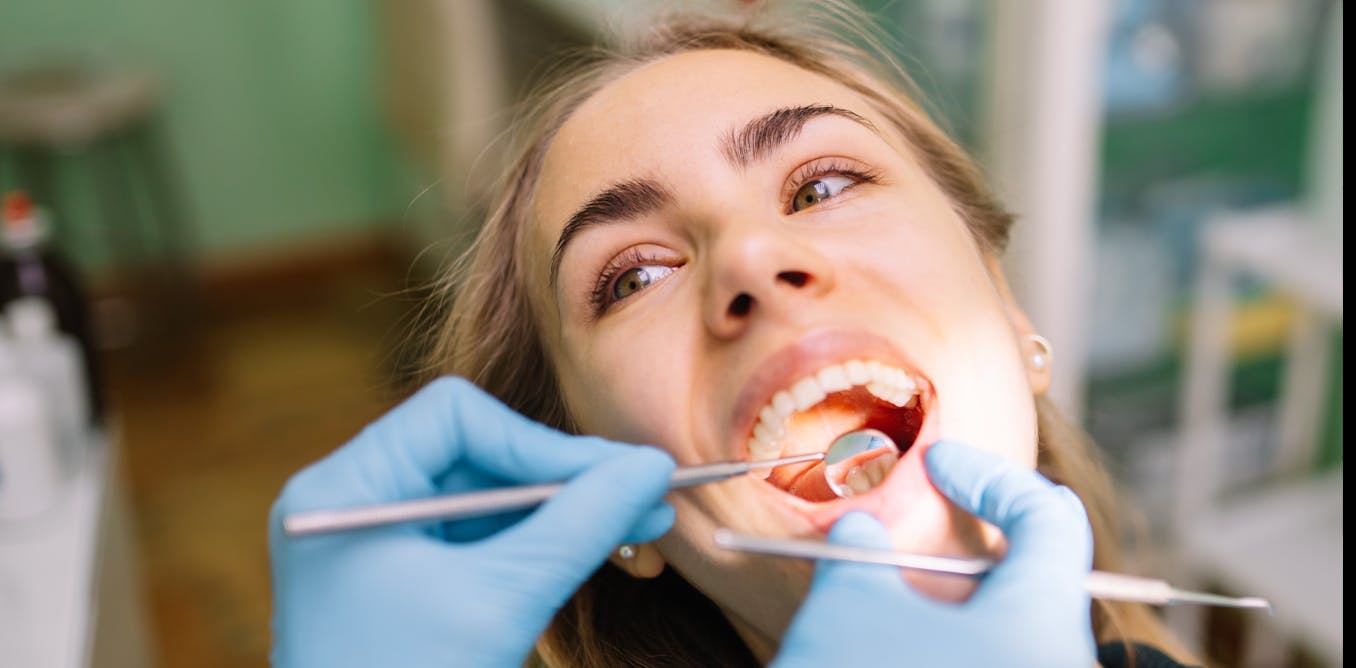Health
As eastern equine encephalitis spreads, a neurologist explains how to stay safe during this latest outbreak of the ‘triple E’ virus
The 2024 outbreak of eastern equine encephalitis – known as triple E or EEE – has caused six reported and confirmed human disease cases in five states, including one death, as of Sept. 4, 2024.
EEE surfaces nearly every year in the U.S., but with another outbreak of West Nile virus also spreading across the country, health officials are working hard to alert people about the serious risks that come with getting a mosquito bite.
The Conversation asked Daniel Pastula, a neurologist and medical epidemiologist from the University of Colorado Anschutz Medical Campus, to explain how EEE spreads and what you can do to reduce your risk of encountering it.
What is eastern equine encephalitis, or triple E?
Eastern equine encephalitis is a virus that is primarily transmitted by certain mosquitoes. It was first identified in horses that died of encephalitis along the mid-Atlantic coast in 1933. EEE was recognized to cause human disease during an outbreak involving horses and humans in southeastern Massachusetts in 1938.
Since then, sporadic human and horse cases have been reported nearly every year in the Atlantic, Great Lakes and Gulf Coast regions of the U.S., with larger outbreaks occurring several years apart in these areas. The last significant outbreak of human EEE disease was in 2019 when over three dozen cases were reported, largely from Massachusetts and Michigan.
How is it transmitted?
EEE virus exists in a natural cycle between Culiseta melanura – the black-legged or black-tailed mosquito – living in eastern freshwater hardwood swamps and certain birds that reside in such swamps.
Culiseta melanura mosquitoes feed almost exclusively on birds and usually do not bite humans or horses. However, more common mosquitoes such as Aedes, Coquillettidia and Culex can sometimes bite infected birds, become infected themselves and then transmit EEE virus to nearby humans or horses. These are called “bridging” mosquitoes.
Rarely, EEE virus has also been transmitted through organ donation. Theoretically it also may be transmitted by blood transfusion.
Why is EEE surfacing now?
Typically, there are about 10 human cases reported annually in the Atlantic, Great Lakes and Gulf Coast regions of the U.S., though there are likely many more mild cases that go unreported. Most human cases occur from July through October in endemic areas.
Every few years, there are much larger outbreaks of EEE disease in certain areas. For instance, in 2019 over three dozen cases were reported, primarily from Massachusetts and Michigan. These cyclic outbreaks are likely due to a complex interaction between temperature, rainfall, mosquito populations, bird immunity and bird migration patterns.
What are EEE’s main symptoms and how severe can an infection be?
Researchers do not have great estimates on how often people become sick after being infected with the virus. Our best estimate is that about 95% of infected people have either no or relatively mild symptoms. Some may develop fever or a flu-like illness after an incubation period of four to 10 days.
About 5% of people infected with EEE virus can go on to develop a brain swelling called encephalitis.
This brain swelling can be particularly severe and may require intensive care. Among those who develop encephalitis, approximately one-third die. The other two-thirds may have permanent neurologic deficits including cognitive problems, weakness or movement disorders.
People younger than 15 and older than 50, as well as those who are immunocompromised, are at higher risk of progressing to encephalitis.
Are there any treatments or vaccines for EEE?
There are no proven effective treatments for EEE at this time. Some clinicians have tried steroids to reduce swelling or antibodies to improve immune response, with variable success. But no treatments have been proven in large clinical trials.
Brain swelling may need to be managed in the intensive care unit, and seizures may need to be treated with anti-seizure medications. Almost all patients who develop encephalitis and survive will need prolonged rehabilitation.
There are currently no commercially available human vaccines for EEE, but there are vaccines for horses in endemic areas.
How do you prevent EEE?
Generally speaking, if you prevent mosquito bites, you prevent EEE virus infection.
There are several things you can do to prevent mosquito bites:
– Use an insect repellent registered by the Environmental Protection Agency on exposed skin when you are outside and mosquitoes are around. They are safe and effective when used as directed.
– Wear long-sleeved shirts and pants when feasible. It is much harder – or even impossible, depending on the fabric – for mosquitoes to bite through clothing. You can also treat your clothing with the insecticide permethrin, which further repels mosquitoes.
– Avoid being outside from dusk to dawn. This is when many species of mosquitoes are most active.
– Use window screens or air conditioning when inside a building to keep mosquitoes outside.
– Dump any unneeded standing water around your property. Mosquitoes like to breed in standing water. You can use this water for watering plants.
Finally, certain local vector control agencies may consider spraying for mosquitoes to kill them in communities where there is a high burden of infection.
Is there a ‘western’ version of the virus in the US?
Yes. western equine encephalitis, or WEE virus, is a closely related virus to EEE. Historically, it had been endemic to the western United States and South America.
However, the last human outbreak of WEE in the United States was in 1987, and the last reported human case in the United States was in 1999. Researchers do not know why WEE has been absent in the western United States for nearly two decades, though it reemerged in Argentina in late 2023.
WEE is thought to be less severe than EEE but still may cause an encephalitis in young children and the elderly in particular. The reemergence of diseases such as EEE and WEE shows the importance of public Health surveillance.
-

 Health1d ago
Health1d agoTeens Are Stuck on Their Screens. Here’s How to Protect Them
-

 Health1d ago
Health1d agoHow Pulmonary Rehab Can Help Improve Asthma Symptoms
-

 Health1d ago
Health1d ago10 Things to Say When Someone Asks Why You’re Still Single
-

 Health2d ago
Health2d agoThe Surprising Benefits of Talking Out Loud to Yourself
-

 Health2d ago
Health2d agoHow Colorado is trying to make the High Line Canal a place for everyone — not just the wealthy
-

 Health3d ago
Health3d agoWhat an HPV Diagnosis Really Means
-

 Health3d ago
Health3d agoThere’s an E. Coli Outbreak in Organic Carrots
-

 Health4d ago
Health4d agoCOVID-19’s Surprising Effect on Cancer




















